Quality control is the cornerstone of success
Photovoltaic projects rely on high quality products that stand the test of time. In our upstream production, we tightly control every step of the manufacturing process, from silicon crystallization to module deployment in the field, ensuring the highest level of quality. We guarantee our products with an industry-leading 25-year lifetime warranty.
In our downstream business processes, MICET follows strict compliance with national regulations and industry standards, including Chinese National Standards GB 50797 “Photovoltaic Power Station Design Specifications,” GB 50794 “Photovoltaic Power Plant Construction Specifications,” GBT 50866 “Design Code for Photovoltaic Power Station Connection to Power System and GBT 19939 “photovoltaic system Grid technology requirements,” and others. With an innovative solar design team, rigorous procurement procedures and experienced construction and operation team, MICET has over 15 years’ worth of hands-on expertise in PV project development.
+186
Professional QC staff
+225
Rigorous quality test
+3500
㎡ testing laboratory
+32
National Inspection Report
Quality control processing technology
Battery chip detection
As the main raw material of photovoltaic module processing, the performance of battery directly determines the quality of photovoltaic module. Therefore, in addition to its appearance inspection, it is necessary to test the output current, output voltage, output power and other parameters of the battery under specific light and temperature conditions. Its testing is mainly done by professional instruments and equipment.
Single piece welding of battery
To realize the power generation function of solar modules, it is necessary to connect single cells to make them a whole. The common connection method is welding. In case of single soldering on the front, solder the tinned copper strip to the main grid line on the front (negative) side of the battery chip with an electric soldering iron at a certain temperature
String welding of battery chips
On the special welding template (which can ensure the relative position of the battery sheets), operate the electric soldering iron to weld the interconnection strips to the electrodes on the back of the battery sheets, so that the battery sheets are connected in series in turn, and the positive and negative electrodes are welded out of the outgoing lines
Battery chip detection
Laminate the battery string, glass, cut EVA and backplane according to a certain level, and prepare for lamination. Glass is coated with a layer of reagent in advance to increase the bonding strength between glass and EVA. When laying, ensure the relative position of battery string and glass and other materials, adjust the distance between batteries, and lay a good foundation for lamination. (Laying level: from bottom to top: glass, EVA, battery, EVA and backplane).
Solar photovoltaic panel lamination
The solar laminator is applied to the photovoltaic production line of solar cells. The principle is to apply a certain pressure on the surface of each layer of material to tightly press the glass, EVA, battery, EVA and backplane together under the heating state.In this way, a complete solar photovoltaic panel is obtained. At this time, the solar photovoltaic panel already has the basic photoelectric conversion function
Install framing
Apply silica gel evenly in the groove of aluminum alloy frame, embed the components into the groove of aluminum alloy, and start the framing machine to finish framing. Apply silica gel evenly at the junction of TPT and aluminum alloy on the back of the component, and evenly apply silica gel around the back of the junction box with corresponding specifications and the root of the lead wire, stick the junction box and connect the lead wire to the junction box. Curing at room temperature and certain humidity.
Clean the solar photovoltaic panel
The dust, grease and other sundries attached to the surface of the solar photovoltaic panel are cleaned by using a high-pressure water jet washing system. After cleaning, it will be used in the air drying system to remove the residual moisture on the surface of the solar photovoltaic panel to ensure the power generation efficiency of the photovoltaic panel
Testing of finished solar photovoltaic panel modules
The eighth process is the testing of finished components. Test according to the operating rules of solar module tester. Firstly, calibrate the solar module tester with standard modules in the same environment, make calibration records, put in the photovoltaic module to be tested, connect the positive and negative poles, test the module, and calculate the electrical performance parameters of the module through comparison and analysis, and record them.
Harsh Environment Test
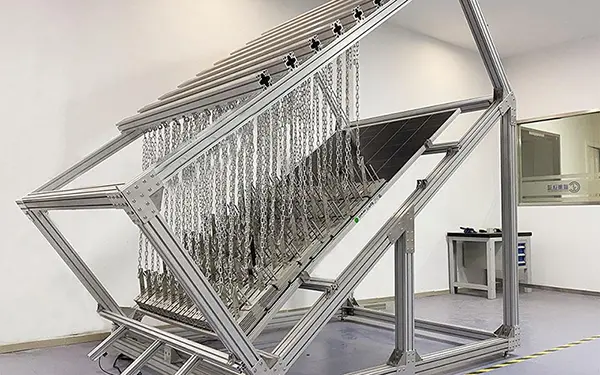
Uneven Snow Load Test
As close to reality as possible, simulate the uneven pressure caused by heavy snowfall on the surface of the module, especially at the bottom. Under the condition of the ultimate pressure of 7000Pa, it is equivalent to 2.8 meters of snow, and the power attenuation of the module is only 0.56%.
Dynamic Mechanical Load Stress Test
Whether it is single-glass beam screw installation or double-glass common beam screw installation, the load capacity of the 670W Supreme module is several times higher than the IEC standard. Under the condition of briquette installation, after ±1500Pa, 20 times the dynamic mechanical load, that is, 20000 cycle tests, the 670W Supreme module has no damage in appearance and good performance. Compared with the IEC standard of ±1000Pa, 1000 cycles, it is 20 times more stringent.
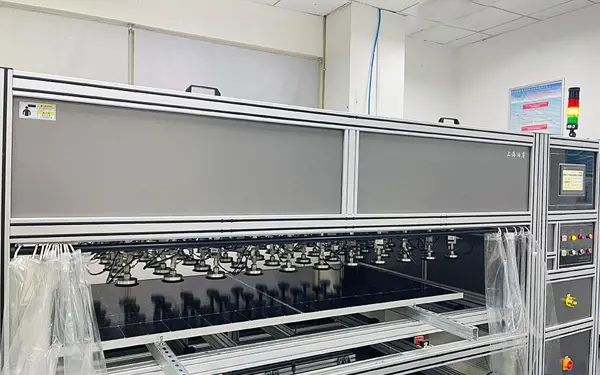
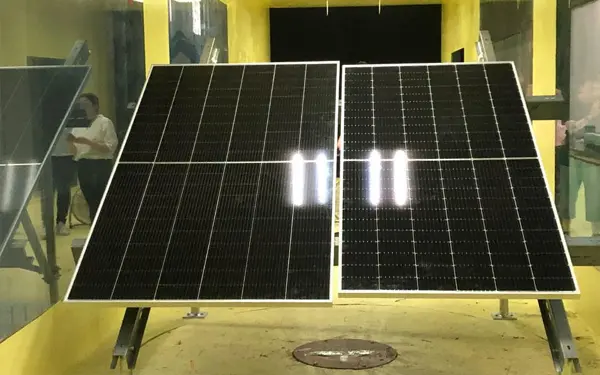
Wind Tunnel Ultimate Wind Speed Test
The wind tunnel equipment applies wind pressure sequentially from low to high, and the duration of each gear is 3 minutes. When the wind speed reaches 62 m/s, the 670W Supreme module is still intact, passing the limit wind speed test equivalent to a 17-level super strong wind.
Low temperature static mechanical load test
Under the extremely low ambient temperature of -40°C, the static mechanical load test of 5400Pa on the front and 2400Pa on the back was completed. The appearance of the module is intact without cracks. The insulation and wet leakage tests all passed, and the power attenuation is only 0.1%.
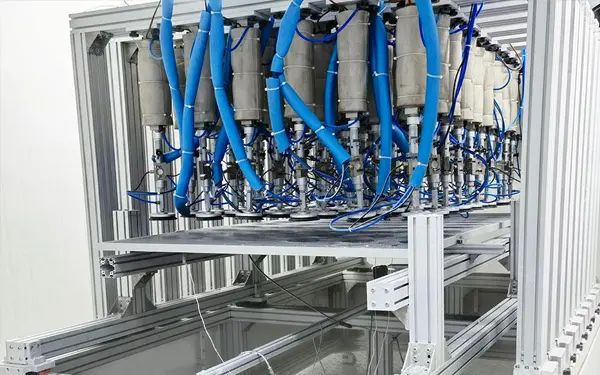
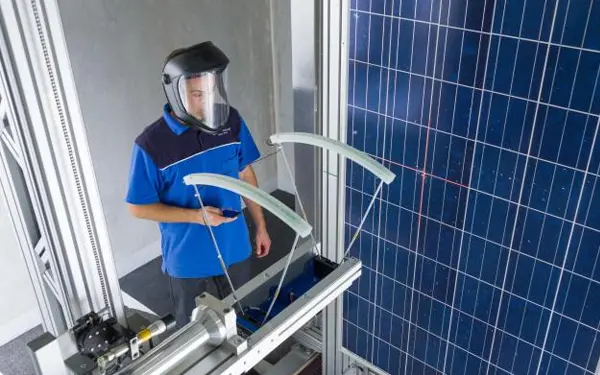
Hail impact test
The test uses a pneumatic launcher to simulate the impact of hailstones on the surface of a PV module. The results showed that the 670W module perfectly passed the 35mm hail impact test, and the power attenuation was only 0.17%.

